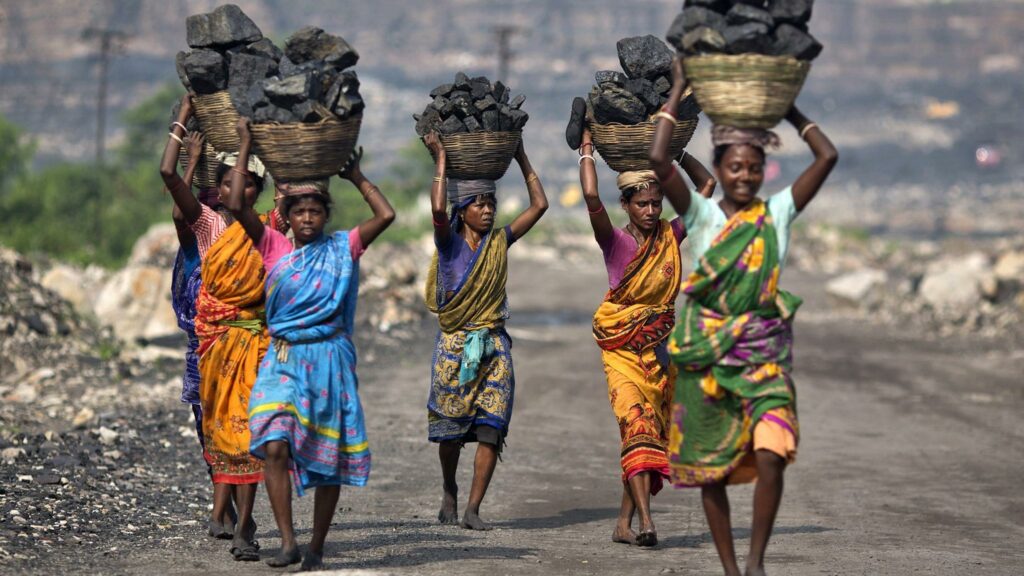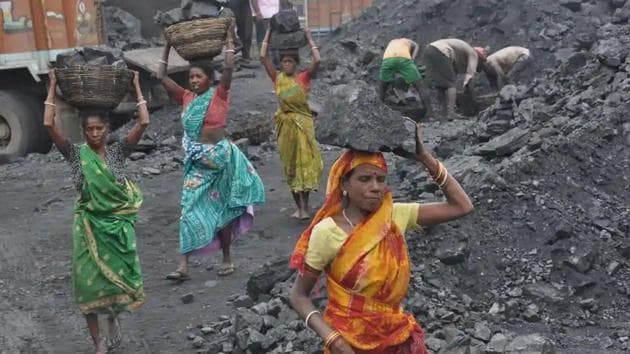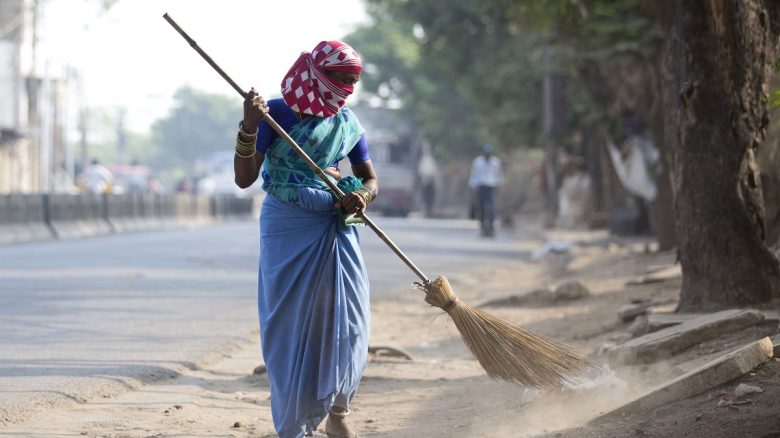“Kisi gurr banane wali se shadi karlo, mazdoori bhi nahi dena padega aur karz bhi nahi lena padega”, says Banerjee babu when Moti, the acclaimed “rasiya” of Sultanganj asks him for some debt. The above dialogue is from the 1973 movie, Saudagar which revolves around a man who sells the best jaggery in the market and his two wives who are eventually responsible for making it. The movie highlights the major part played by women that generates income apart from their daily household work and questions the stable notions of the ‘male breadwinner’. While Moti is proud of being the best jaggery seller, one eventually realises that his role is too meagre compared to Majubee’s work of converting the date nectar into jaggery. This movie opens up to us several questions and lenses to analyse the notion of ‘work’. It shows that a woman must be able to work for her husband or the patriarch for nothing in return.
Several Marxist-Feminist scholars have pointed out that capitalism thrives on the unpaid labour performed by women. What happens in a capitalist mode of production? In the simplest sense, the industrialised economy functions to produce profit which will be accrued by those who own the means of production, i.e., the capitalists. This profit is drawn from the surplus labour of the workers for which they are not paid. The wage is certainly not sufficient enough to reproduce a worker to work another day.
Their labour has often been invisibilised largely because of being unpaid. If a woman generates any form of income apart from their husbands’ or fathers’, it is always considered supplementary even if it might be the larger share. If she is collaborating in some work with the men of her family, her work is considered mere help. Patriarchy and capitalism function closely to naturalise certain work attributed to women and subsequently devalue them.
The understanding of ‘work’ revolves around the idea of an activity that involves some form of production that could be marketed and generate a monetary return. Such a restrictive understanding fails to recognise the specific ways in which different social identities communicate with the notion of ‘work’. The core of the capitalist economic system is profit maximisation and therefore it creates a hierarchal division of labour that is often problematised by various social identities. It creates dichotomies like the public and the private, work and home, paid and unpaid. In doing so, it becomes easy for capitalism to value certain forms of work and devalue others.

Who benefits from this unpaid nature of women’s work? Surely men, but also capitalism. Capitalism has often used the women workforce by bringing them into factories and throwing them out according to its requirement. Capitalism and patriarchy collaborate in determining that women’s work must be devalued and devalorised as it is not directly related to the market. Scholars have argued that women even if they are employed in paid work or not have a specific relationship with the economic structure, which is not the case with the men workforce. There is a lack of truth in the fact that the unpaid work that women perform is not related to the market or the economy.
Also Read: Wife Expressing Desire To Work Not Cruelty: Bombay High Court
Several Marxist-Feminist scholars have pointed out that capitalism thrives on the unpaid labour performed by women. What happens in a capitalist mode of production? In the simplest sense, the industrialised economy functions to produce profit which will be accrued by those who own the means of production, i.e., the capitalists. This profit is drawn from the surplus labour of the workers for which they are not paid. The wage is certainly not sufficient enough to reproduce a worker to work another day. Further, in a capitalist mode of production, there is an army of reserved labour waiting to get the same exploitative work as capitalism has destroyed all earlier forms of production which were barriers to its development.

If the wage is not sufficient to reproduce the worker, then there must be something that functions in such a way that ensures the workers turn up to the factories and other places of work. There is some factor that is pushing the process of production from behind. The social reproductive role of women, the housework, and the care work enables these workers to return to ‘productive’ work every day. Social reproduction thus becomes the driving force of production. However, capitalism does not pay for such work which is to be performed by women. It goes on to naturalise the role of women as housewives who must perform housework irrespective of whether they are engaged in some other form of waged work or not. Such a realisation has led several scholars to argue for wages against housework. Housework has never been a private matter; it has always been part of the economic structure and the structure has benefitted from its unpaid nature.
The interplay of the economic structures with the existing notions of Brahmanical patriarchy comes into the foreground. It is considered to be the function of a ‘good’ wife/daughter/mother/sister to work for the patriarch out of love and respect. The ideologies of a housewife and the male breadwinner function in a way to ensure that generating income remains characteristic of the ‘man’. These structures of the capitalist economy and patriarchy continuously reinforce each other to the detriment of the already oppressed.
The neoliberal capitalist economy has created precarious work situations for everyone. The clear distinction between a woman’s economic and reproductive and hence paid and unpaid labour no longer exists the way it has mostly been understood. There are spaces in between these extremes which shows that while women work in gainful economic activities, they are not even paid for them. While housework and care are one form of unpaid labour, another form of unpaid labour exists where women work, such as in areas like subsistence agriculture, cattle rearing, small family business, etc.

The line between these two forms of unpaid labour has always been weak, in the neo-liberal economy it can be seen almost everywhere. The neat category of the formal and informal sectors does not exist anymore, moreover, there is a fast decline in any form of availability of work. Such a situation has prompted a very significant population to depend on self-employment. Occupations like running food stalls, sweet shops, general stores, etc., all function because of the unpaid work that women put in behind the back. One can easily observe small food stalls on every street. Once you interrogate the preparation and production, you realise it is the wife who has already done half of the work at home.
Also Read: Women At Work: The Politics Of Claiming Space
In a Jhuggi-Jhopri cluster area situated in Mangolpuri, we found a small food stall named ‘South Indian Corner’ run by a man and his teenage son. It was noticed that the initial preparation of the food materials was done by his wife back at home. The supposed owner of the food joint, the husband, emphasised “iss kaam ke paise bahar de denge to kamayenge kya”. His wife also held similar views that it was her “ghar ka kaam” which doesn’t require a wage as it is something naturally associated with her being a woman and a wife. She categorically marked “paise to ghar me hi aa rahe na”. It is worth noticing that even when women consider such economic activities as a family business, they do not have an equal say on the business and income and decisions regarding them.
Similarly, in another locality called Jahangirpuri, we found a woman cleaning a food cart outside her home which sold “gol-gappe”. Soon after cleaning the cart, she took out vessels that had mashed potatoes, spices, and sauces. Upon inquiring about this work, she said, “phulke to factory se aa jate hain, baki ka samaan to ghar me hi bana leti hoon, isse inke paise bach jate hain”. Even when women perform more than half of the work, neither their husbands nor they consider the income being generated as theirs. We also found a street vendor selling Delhi’s most famous “ram laddoos” in Kamlanagar Market. Similar to our observations in the above cases, every preparation from soaking the lentils, to grinding, frying, and cutting the radish and preparing the sauce as condiments were done by his wife and two young daughters.

The amount of work that women do daily is obscured as love, respect, and duty. Their work has always remained in the shadows and has been invisibilised from understanding the economic structure more accurately. Such work is also not accounted for data collection, like the census. While the endless hours of a woman’s toiling labour generate income, it is always considered as the man’s income as he has actively engaged in the exchange of the product in the market. He gets all the recognition, pride, and money while the woman who has worked in producing the commodity gets none.
The demand for wages is not just a monetary return but a challenge to the economic structure as it forces the capital to restructure social relations that have always depended on various forms of exploitation and in this case systematic sexist oppression. The restructuring of social relations upholds a revolutionary capacity as it challenges the natural attributes given to women and their unpaid work status. It recognises women as ‘workers’ and becomes favourable to the unity of the working class.
Here, the interplay of the economic structures with the existing notions of Brahmanical patriarchy comes into the foreground. It is considered to be the function of a ‘good’ wife/daughter/mother/sister to work for the patriarch out of love and respect. The ideologies of a housewife and the male breadwinner function in a way to ensure that generating income remains characteristic of the ‘man’. These structures of the capitalist economy and patriarchy continuously reinforce each other to the detriment of the already oppressed. The work that women perform is devalued, also because the specific work is considered to be something that does not require a skill. It is assumed that it is the characteristic of women to be able to perform such works. The unpaid labour that goes into housework and petty family businesses are the sites of emotional and affective relationships. It becomes extremely difficult to negotiate prospects of love and exploitative labour as work often falls outside the domain of time and money.
Also Read: The Insecure Livelihood Of Sanitation Workers In India
It is interesting that while a huge population of women are engaged in either or both forms of unpaid labour, it is also extremely privatised. Every woman is working in the patriarch’s home, but that work is not recognised as a collective work performed by a particular social group. Hence, it has led to severe problems in the unionisation of women working in these concealed spheres. The lack of collectivisation of their interests on the issue of unpaid labour hampers the development of any form of resistance. The unpaid work of women is significant for the maintenance of the economic system. The constant efforts to visibilise the shadowed work that women perform and the contestations around it, enable us to argue for not just recognition but also wages.

The demand for wages is not just a monetary return but a challenge to the economic structure as it forces the capital to restructure social relations that have always depended on various forms of exploitation and in this case systematic sexist oppression. The restructuring of social relations upholds a revolutionary capacity as it challenges the natural attributes given to women and their unpaid work status. It recognises women as ‘workers’ and becomes favourable to the unity of the working class. As bell hooks has marked “feminism is a movement to end sexist oppression”, visibalisation of various areas of women’s work like housework, care work, affective and emotional work, etc., must therefore become a very significant part of the feminist movement.





Yes ! Totally agree , Contribution of women in Mainstream economy is being neglected from very long era. A women does everything to please and help her Man without being honoured and getting credit. Women 🍵